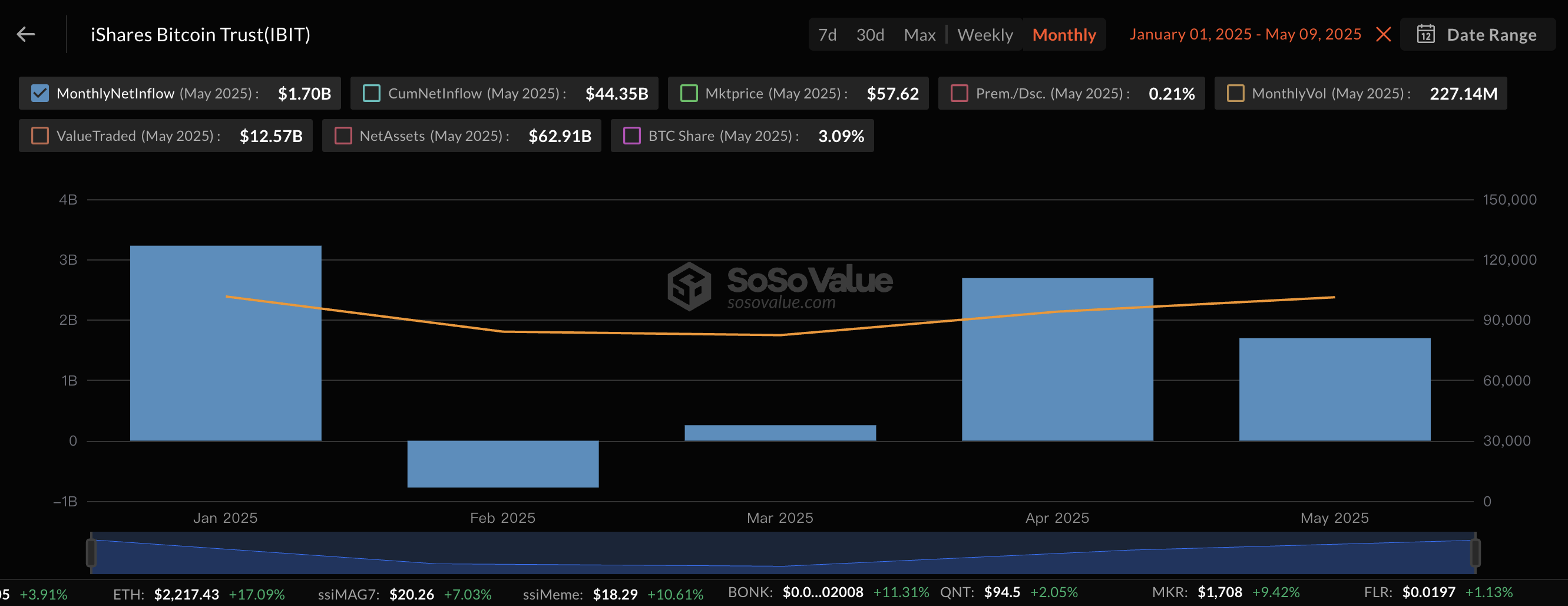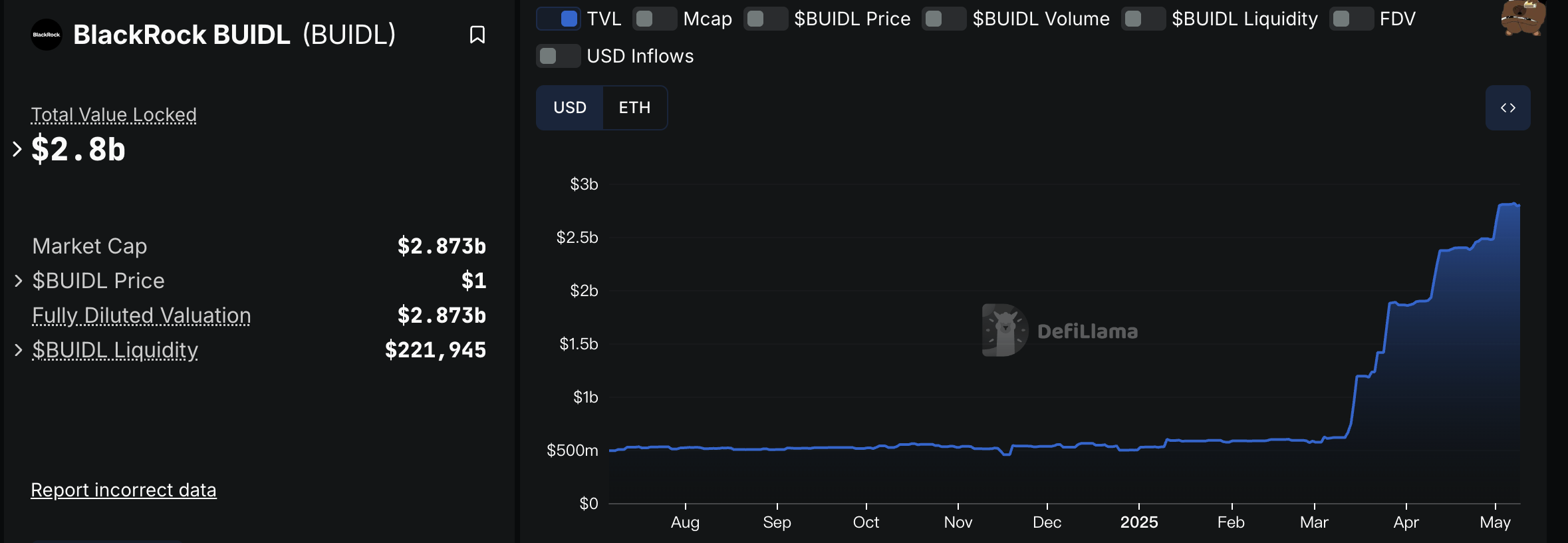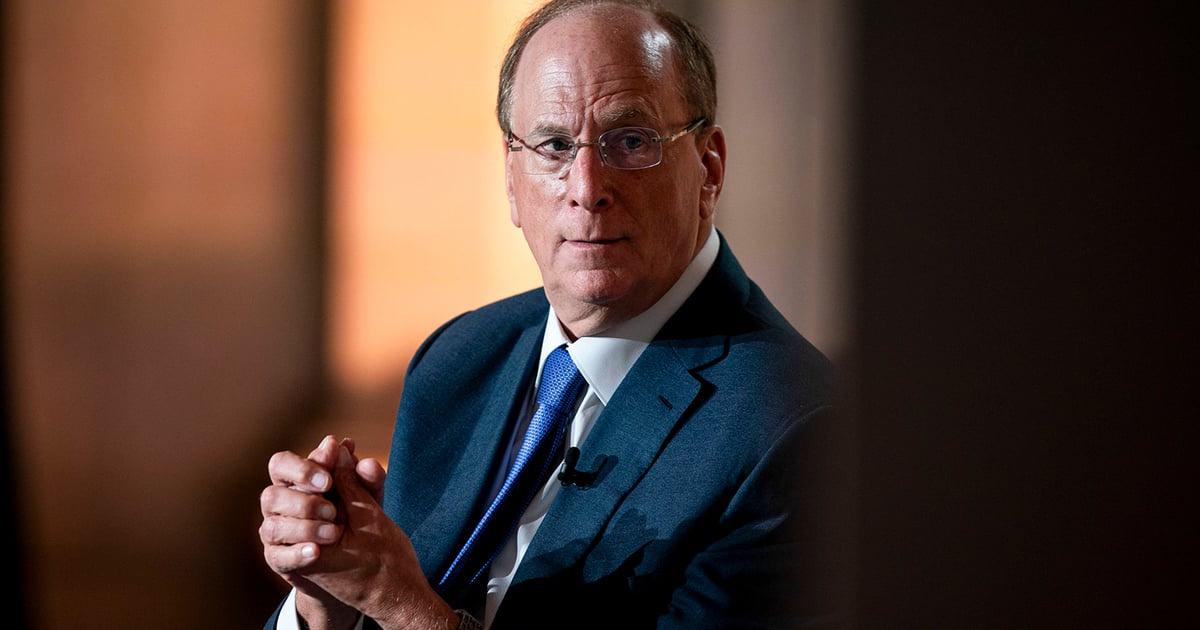Bitcoin’s biggest driver, the crypto ambitions of BlackRock, the financial empire

Reprinted from panewslab
05/10/2025·16DAuthor: Nancy, PANews
A news about "BlackRock IBIT's capital inflow this year exceeds the world's largest gold fund" has become the focus of market attention, in conjunction with Bitcoin's return to $100,000 on May 8.
Bitcoin ETFs take over the crypto community, making Wall Street an important buyer of Bitcoin, pushing this former marginal asset to leap forward in mainstreaming and compliance, and also becoming a key puzzle for BlackRock's global financial landscape.
BlackRock, the world's largest asset management company, manages up to $11.5 trillion in assets. However, this "surface asset management giant" is no longer just a role as an asset manager. BlackRock, the financial center known as the "shadow central bank", is deeply involved in the formulation of global capital flows, the shaping of policy orientations, and the construction of systemic financial tools.
From IBIT to BUIDL, BlackRock's on-chain layout
In the traditional financial order, BlackRock has long been a player who controls the rules of the game. Now, this financial giant is quietly opening up the value bridge between traditional capital and digital assets, trying to reconstruct the future financial order.
One of the core issues that have been unanswered in the crypto market over the past decade is “when will the US SEC approve Bitcoin spot ETFs”. For this reason, dozens of institutions have been going on one after another, but have repeatedly hit a wall. Until June 2023, BlackRock officially submitted a Bitcoin spot ETF application, which is not only an application, but also a catalyst for market confidence. The market quickly realized that when even BlackRock took the lead in Bitcoin, it was only a matter of time before regulation was passed.
In January 2024, the SEC officially approved several Bitcoin spot ETFs, including BlackRock IBIT. This incident not only became a "watershed of Bitcoin compliance", but also means the reallocation of narrative power: BlackRock uses an ETF to introduce Bitcoin into the orthodox stage of mainstream finance.
After IBIT was launched, it quickly attracted a large amount of institutional funds, which not only ended Grayscale GBTC's monopoly position in Bitcoin exposure, but also surpassed the world's largest gold ETF GLD in terms of capital inflows.

According to public data, since the beginning of this year, IBIT has achieved a net inflow of approximately US$6.97 billion, exceeding GLD's US$6.29 billion in the same period. Although Bitcoin rose only 1.4% in the same period, gold rose 24.9%, funds poured into IBIT against the trend, showing the market's high recognition of its long-term allocation value.
Eric Balchunas, senior ETF analyst at Bloomberg, pointed out that the continued money-making process during the weak price period confirms the asset allocation value of Bitcoin as a "digital gold". It is expected that the scale of BTC ETF will reach three times the scale of gold ETF within 3-5 years. Strategy Chairman Michael Saylor is bolder to predict that BlackRock IBIT will become the world's largest ETF within a decade.
However, IBIT is just the starting point in BlackRock's larger picture. Rather than saying BlackRock is promoting an ETF, it is reshaping a new financial infrastructure with tokenization as its core.

In March 2024, BlackRock launched the tokenized money market fund BUIDL, becoming its first traditional asset fund to operate fully on-chain. As of May 2025, BUIDL's TVL has exceeded US$2.8 billion, ranking first in the global RWA track, far ahead of competitors such as WisdomTree and Franklin Templeton. It also means that BUIDL is no longer an experimental project, but a realistic path verified by the market.
Further, BlackRock has recently applied to establish DLT Shares and announced the completion of the on-chain mapping of $150 billion in assets, covering diverse fields such as real estate trusts and commodities. This case not only marks RWA’s entry into the stage of commercialization and scale, but also enables on-chain finance to extend from edge experiments to the traditional capital market.
The counterattack of the frustrated Wall Street
The starting point of everything may be traced back to an office in Manhattan in 1986.

That year, Larry Fink was a hot star trader on Wall Street and the youngest managing director in Boston's history, leading the most cutting-edge financial innovation at the time - Mortgage Bonds (CMOs). But a mistake in interest rate bet caused his company to lose more than $100 million and his career fell to a low point. But this financial Waterloo inspired his profound reflection on risk management and also sowed the seeds of BlackRock's future rise.
Two years later, Larry Fink and several former comrades-in-arms founded Blackstone Financial Management Company with the support of Blackstone Group, which is also the predecessor of BlackRock, with only $5 million in start-up capital. Unlike the high-frequency trading and speculative arbitrage trend that was popular on Wall Street at that time, Larry Fink takes risk management as his core philosophy. This concept will become the underlying logic and moat for BlackRock to sweep the global asset management industry in the future.
With deep insight into the fixed income market and innovative asset management model, BlackRock quickly emerged. By the end of 1994, BlackRock's asset management scale (AUM) soared from US$1.2 billion at its beginning to US$53 billion. In the same year, it was officially split from BlackStone Group and independently renamed "BlackRock" (BlackRock), opening up a truly global expansion.
What laid the core moat of BlackRock is not just the scale of funds, but the epoch-making financial risk analysis platform it developed - the Aladdin system. This risk control and asset allocation analysis platform is known as the "super brain" of the global capital market. It performs more than 5,000 combination stress tests every day and calculates 180 million option adjustments per week, bringing BlackRock up to US$1.4 billion in revenue in 2022 alone. More importantly, Aladdin has now become an important financial infrastructure in the world. More than 200 large financial institutions around the world, including Swiss Bank, Deutsche Bank, Swiss National Bank, and even the Federal Reserve, are using Aladdin for risk control and asset allocation management. The scale of its service assets exceeds US$20 trillion, which is almost one-fifth of global GDP. In a sense, BlackRock's influence has surpassed the traditional asset managers, and is also a "predictor" of global market sentiment and capital flow.
Not only that, BlackRock also gained the right to speak in global capital allocation through its ETF business. After the bursting of the real estate bubble in 2008, the market urgently needed an investment tool with high transparency, low cost and strong liquidity. ETFs quickly became an important choice for institutional and retail investors to pursue risk diversification and asset allocation efficiency. BlackRock then acquired BGI, a subsidiary of Barclays in the UK, for US$13.5 billion in 2009, and won the world's largest index fund brand iShares ETF.
ETFs are not only passive investment tools, but also a channel for international capital allocation rights. Whoever can be included in the index will gain liquidity, and BlackRock has become the maker and referee of this global capital game. According to official disclosure, the asset size of iShares ETF has reached US$3.3 trillion, managing more than 1,400 ETFs, covering almost major global markets. And through ETFs, BlackRock has gradually penetrated into the shareholder structure of almost every large listed company in the United States. According to 2023 data, the three index funds, including BlackRock, are the largest single shareholders of more than 90% of the S&P 500 index companies, becoming the "invisible hand" in the equity structure of US companies.
"Revolving Door", the Secret Weapon of BlackRock Capital Games
What really brought BlackRock into the global public eye was its role as the "central bank behind the scenes" in previous financial crises. Especially in the global financial crisis in 2008, with Lehman Brothers closure and AIG on the verge of bankruptcy, the entire financial system was in jeopardy. The US Treasury Department and the Federal Reserve urgently need an external professional institution that understands asset pricing and can operate liquidation. BlackRock took over this hot potato, not only assisting in the liquidation of non-performing assets, but also helping the Federal Reserve design the largest asset rescue plan in history TARP.
Since then, BlackRock’s role has no longer been just a player in the market, but has become a bridge for policy implementation. The COVID-19 pandemic in 2020 once again caused the global market to plummet. The Federal Reserve once again invited this "old friend" and directly interfered with the market through ETFs unprecedentedly. The one who carried out this action was BlackRock's iShares series funds, which was also criticized for believing that BlackRock's relationship with the US government was "too close." It can be said that BlackRock is not only a private giant in the market, but also a policy implementation tool trusted by the government.
Behind this is a more secret system: the revolving door of government and business.
In the past, a large number of senior BlackRock executives entered government agencies such as the U.S. Treasury and the Federal Reserve to hold important positions after leaving, and some officials who had served in the U.S. government also joined BlackRock after leaving. This interweaving of political and business relations often means a pre-emptive advantage under information asymmetry, providing a unique advantage for BlackRock's strategic layout on the global stage.
Today, BlackRock's tentacles are no longer limited to the financial field. In recent years, it has continued to lay out major economic arteries such as energy, data, medical care, logistics and even ports. Recently, BlackRock also plans to acquire 43 port projects under Li Ka-shing's Cheung Kong Hutchison for US$22.8 billion. If the transaction is completed, BlackRock will become one of the actual controllers of the world's largest port network, involving more than 100 key nodes, and will have a deeper impact on the operation of the global economy. According to the Wall Street Journal, such transactions have even received acquiescent and even support from the US government. In other words, BlackRock is no longer a participant in the market, but an executor of the power game between great power.
BlackRock’s story is not only a successful example of Wall Street, but also a realistic textbook on how capital penetrates power, shapes market rules, and influences the future in the era of globalization. It does not create news, but rules; it does not rule directly, but affects fiscal policy; it does not own a company, but is the largest shareholder behind almost all companies. The existence of this invisible beast has long penetrated into every corner of our lives.
Because of its high sensitivity and systemic influence to global financial pulses, BlackRock is the first to perceive the structural changes triggered by crypto assets. "If the United States cannot control its inflated debt and fiscal deficits, the US dollar relies on to maintain its "global reserve currency status" for decades, which may eventually give way to emerging digital assets such as Bitcoin." BlackRock CEO Larry FinK bluntly stated in his 27-page annual letter to investors in 2025, and mentioned that tokenization is becoming a key force in reshaping financial infrastructure. If SWIFT is a postal service, then tokenization is the email itself—the assets can be circulated directly and in real time, bypassing all intermediaries. Tokenization will make investments and returns more "democratic". This may not be the CEO's bold imagination, but a calm judgment on the future financial sovereignty map. (Related Reading: BlackRock CEO’s annual letter to investors: Bitcoin may challenge the global status of the US dollar, and tokenization is the financial highway of the future )
In the on-chain world, BlackRock is trying to dominate not only liquidity, but also the formulation of standards, infrastructure construction and supervision. As history has always shown, BlackRock's intention has never been to "invest many assets", but whether it can formulate the rules of the game for the next generation of finance.

